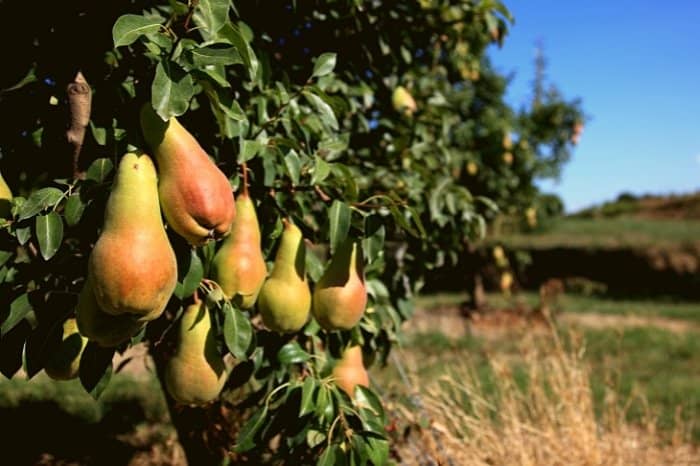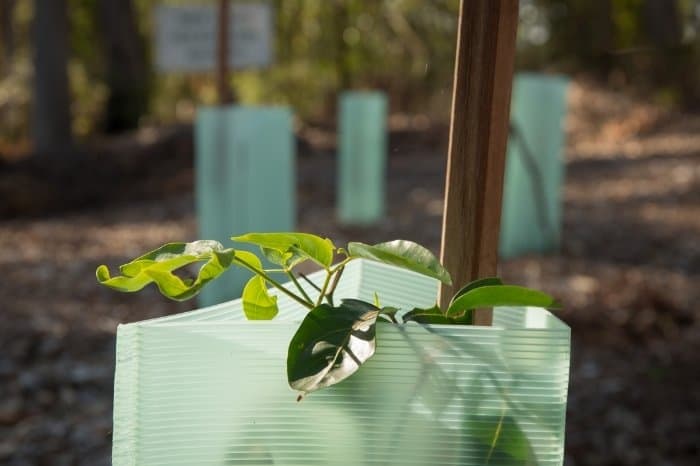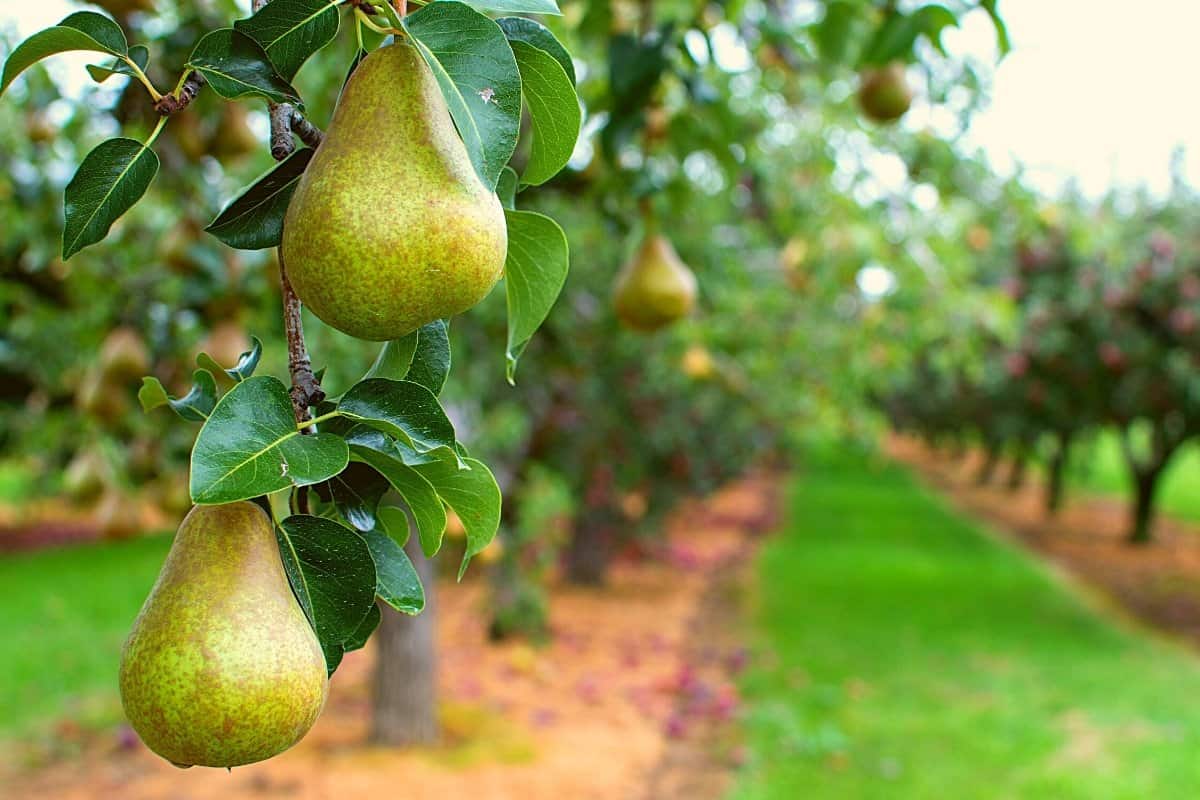Last Updated on December 12, 2021 by Cristina
Pears are very popular fruits with many gardeners wanting them in their gardens, wondering when is it best to plant pear trees? By nature, pears are very rewarding if you take the right care of them! However, it’s important to know when, where, and how to plant them properly, as well as how to care for them. In today’s article, that’s exactly what we’ll be learning!
How To Plant A Pear Tree?
There are a lot of things you have to plan for before you ever plant your tree. Location is the first thing to consider! A pear tree needs to be planted in a well-drained area with a lot of sun hours. Even though your pear won’t mind a bit of shade, you’ll achieve the best results with a sunny location! Another thing to keep in mind when choosing your location is the size of the tree.

Pear Trees Can Grow Up To 40 Feet!
Because of this, you have to find a spot with no other objects or plants intruding on the pear’s space. If you can’t afford that sort of freedom in your garden, try it’d be best to opt for a dwarf pear tree. These pears don’t grow to become anything as nearly as large as fully-grown pears.
Something that’s interesting and important about pears is the level of pH in the soil – they prefer soil that’s slightly acidic! A pH of 6-7 (with some gardeners insisting on an even lower pH of 5.9 to 6.5) is the best level of acidity for pears – the easiest way to determine the pH of the soil in your garden is with a soil test.
What’s The Best Time To Plant Pear Trees?
Unlike a lot of other plants, it’s best to plant pears in early spring! Once again, the reason for this is the sun.
If you’re in a rush to get fruit from the tree, we’re going to have to disappoint you. You’re better off at a farmer’s market, as pears don’t produce fruit until they’re at least 4 years old, with some late bloomers waiting until they’re 6!
Planting Pear Trees
Planting a pear isn’t difficult at all! Make sure to dig out a large hole and throw a lot of compost in there, mixing it with the soil. Most experts recommend a 50/50 mixture of compost and soil! The hole you dig should be at least twice as large as the pot.
Once you’re done with this, take the pear out of the burlap sack and get rid of any roots that are protruding out the root ball. Put the pear in the ground and fill it with a mixture of soil and compost. An important note to keep in mind is the level of the tree – roots at the top should be in line with the soil line!
All that’s left to do now is to water your tree! You should water the pear at least once a week, while twice would be ideal. This will help the roots establish themselves in the soil.
Caring And Growing A Pear Tree
If you’re a pear-lover, then you’ll be happy to hear that it’s not difficult to care for pear trees. The most important part of care, however, starts right after you plant the tree!
Watering
Depending on the type of soil, you should water your pear tree at least once a week (clay soil) and twice a week for light soil! The watering itself needs to be really thorough! The whole root system needs to be covered with water. However, after a year, this intense watering process can stop. That’s usually how long it takes for roots to establish themselves.
When the tree is established, it only needs about an inch of water every week, and it’s likely that rain will be enough for your pear tree. However, if you live in a dry area, you’ll have to water it on your own.
Fertilizing
Pears don’t require much fertilization, but you’ll need a specific fertilizer for them. Copper, iron, zinc, magnesium, boron, and manganese are all crucial to pears.
Down to Earth Organic Fruit Tree Fertilizer Mix 6-2-4, 5lb
Never fertilize immediately after planting your pear tree! Pears don’t really need fertilizer the year they’re planted! It’s best to fertilize your pear tree only once a year, preferably in the spring. An additional bonus would be keeping a layer of mulch around the base of the tree. The reason for this is twofold: it will regulate the temperature of the ground and it will prevent weed growth.
Diseases
Pears are pretty resistant, but there are a few diseases currently prevalent in the US that are affecting pears.
Minnesota, for example, is dealing with fireblight, with the only solution being timely pruning and not overfertilizing.
Regarding insects, however, we come bearing good news – pears are more resistant to insects than other fruits. Luckily for us, their nectar isn’t as nearly as attractive as that of other fruits. Most experts suggest that you don’t spray your pears with insecticide for no reason. Different areas host different species, meaning that you might not have any problems with insects at all.
If you notice that your pear is suffering from a problem with insects, only then should you use insecticide.
Making It Through the Winter
The best advice we can give you is to use a plastic tree guard! These are great for preventing the tree trunk from cracking or suffering any damage from the cold!
You can take these guards off as soon as spring temperatures come around, while the tree won’t need the guard at all anymore after about 6 years of age!

Conclusion
In conclusion, it’s best to plant your pear tree in early spring! You should choose a sunny location in your garden, with a pH between 6 and 7! Make sure to water your pear tree thoroughly when you first plant it. Pears don’t need any special watering once they’re a year old, unless it’s particularly dry, while they usually don’t have any problems with insects. You should only fertilize it once a year and don’t treat it with insecticides for no reason. Your pear tree will start producing fruit after about 4 years!



